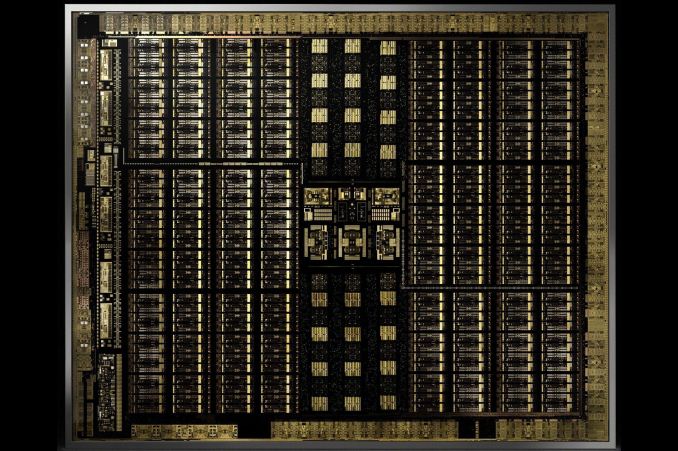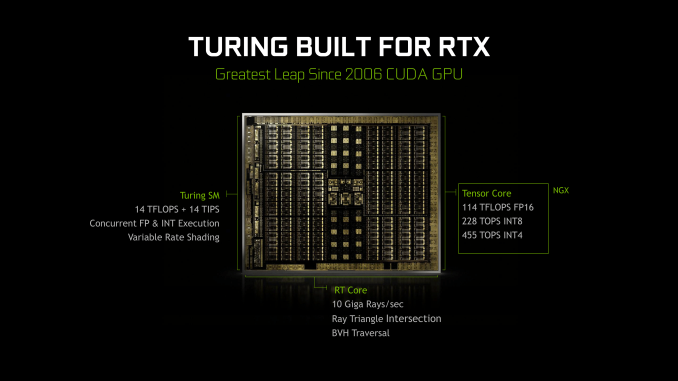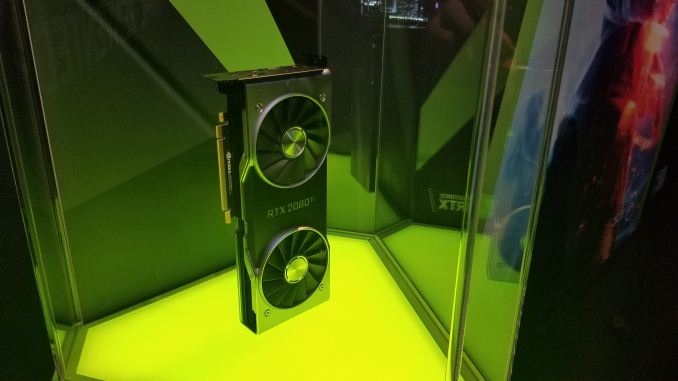The NVIDIA Turing GPU Architecture Deep Dive: Prelude to GeForce RTX
by Nate Oh on September 14, 2018 12:30 PM EST
It’s been roughly a month since NVIDIA's Turing architecture was revealed, and if the GeForce RTX 20-series announcement a few weeks ago has clued us in on anything, is that real time raytracing was important enough for NVIDIA to drop “GeForce GTX” for “GeForce RTX” and completely change the tenor of how they talk about gaming video cards. Since then, it’s become clear that Turing and the GeForce RTX 20-series have a lot of moving parts: RT Cores, real time raytracing, Tensor Cores, AI features (i.e. DLSS), raytracing APIs. All of it coming together for a future direction of both game development and GeForce cards.
In a significant departure from past launches, NVIDIA has broken up the embargos around the unveiling of their latest cards into two parts: architecture and performance. For the first part, today NVIDIA has finally lifted the veil on much of the Turing architecture details, and there are many. So many that there are some interesting aspects that have yet to be explained, and some that we’ll need to dig into alongside objective data. But it also gives us an opportunity to pick apart the namesake of GeForce RTX: raytracing.
While we can't discuss real-world performance until next week, for real time ray tracing it is almost a moot point. In short, there's no software to use with it right now. Accessing Turing's ray tracing features requires using the DirectX Raytracing (DXR) API, NVIDIA's OptiX engine, or the unreleased Vulkan ray tracing extensions. For use in video games, it essentially narrows down to just DXR, which has yet to be released to end-users.
The timing, however, is better than it seems. A year or so later could mean facing products that are competitive in traditional rasterization. And given NVIDIA's traditionally strong ecosystem with developers and middleware (e.g. GameWorks), they would want to leverage high-profile games for ringing up consumer support for hybrid rendering, which is where both ray tracing and rasterization is used.
So as we've said before, with hybrid rendering, NVIDIA is gunning for nothing less than a complete paradigm shift in consumer graphics and gaming GPUs. And insofar as real time ray tracing is the 'holy grail' of computer graphics, NVIDIA has plenty of other potential motivations beyond graphical purism. Like all high-performance silicon design firms, NVIDIA is feeling the pressure of the slow death of Moore's Law, of which fixed function but versatile hardware provides a solution. And where NVIDIA compares the Turing 20-series to the Pascal 10-series, Turing has much more in common with Volta, being in the same generational compute family (sm_75 and sm_70), an interesting development as both NVIDIA and AMD have stated that GPU architecture will soon diverge into separate designs for gaming and compute. Not to mention that making a new standard out of hybrid rendering would hamper competitors from either catching up or joining the market.
But real time ray tracing being what it is, it was always a matter of time before it became feasible, either through NVIDIA or another company. DXR, for its part, doesn't specify the implementations for running its hardware accelerated layer. What adds to the complexity is the branding and marketing of the Turing-related GeForce RTX ecosystem, as well as the inclusion of Tensor Core accelerated features that are not inherently part of hybrid rendering, but is part of a GPU architecture that has now made its way to consumer GeForce.
For the time being though, the GeForce RTX cards are not released yet, and we can’t talk about any real-world data. Nevertheless, the context of hybrid rendering and real time ray tracing is central to Turing and to GeForce RTX, and it will remain so as DXR is eventually released and consumer-relevant testing methodology is established for it. In light of these factors, as well as Turing information we’ve yet to fully analyze, today we’ll focus on the Turing architecture and how it relates to real-time raytracing. And be sure to stay tuned for the performance review next week!












111 Comments
View All Comments
xXx][Zenith - Friday, September 14, 2018 - link
Nice write-up! With 25% of the chip area dedicated to Tensor Cores and other 25% to RT Cores NVIDIA is betting big on DLSS and RTX for gaming usecases. With all the architectural improvements, better memory compression ... AMD is out of the game, quite frankly.Btw, for the fans of GigaRays/Sec, aka CEO metric, here is a Optix-RTX benchmark for Volta, Pascal and Maxwell GPUs: https://www.youtube.com/watch?v=ULtXYzjGogg
OptiX 5.1 API will work with Turing GPUs but will not take advantage of the new RT Cores, so older-gen NV GPUs can be directly compared to Turing. Application devs need to rebuild with Optix 5.2 to get access to HW accelarated ray tracing. Imho, RTX cards will have nice speedup with Turing RT Cores using GPU renderers (Octane, VRay, ...) but the available RAM will limit the scene complexity big time.
blode - Friday, September 14, 2018 - link
hate when i lose a game before my opponent arriveseddman - Friday, September 14, 2018 - link
As far as I can tell, GigaRays/Sec is not an nvidia made term. It's been used before by others too, like imagination tech.The nvidia made up term is RTX-ops.
xXx][Zenith - Friday, September 14, 2018 - link
Ray tracing metric without scene complexity, viewport placement is just smoke and mirrors ...From whitepaper: "Turing ray tracing performance with RT Cores is significantly faster than ray tracing in Pascal GPUs. Turing can deliver far more Giga Rays/Sec than Pascal on different workloads, as shown in Figure 19. Pascal is spending approximately 1.1 Giga Rays/Sec, or 10 TFLOPS / Giga Ray to do ray tracing in software, whereas Turing can do 10+ Giga Rays/Sec using RT Cores, and run ray tracing 10 times faster."
eddman - Saturday, September 15, 2018 - link
I don't know the technical details of ray tracing, but how is that nvidia statement related to scene complexity, etc?From my understanding of that statement, they are simply saying that turing is able to deliver far more rays/sec than pascal, because it is basically hardware-accelerating the operations through RT cores but pascal has to do all those operations in software through regular shader cores.
niva - Wednesday, September 19, 2018 - link
If you hold scene complexity constant (take the same environment/angle) and run a ray tracing experiment, the new hardware will be that much faster at cranking out frames. At least that's how I'm interpreting the article and the statement above, I'm not really sure if that's accurate though...Yojimbo - Saturday, September 15, 2018 - link
When did Imgtec use gigarays? As far as I remember they didn't have hardware capable of a gigaray. They measured in hundreds of millions of rays per second, and I don't remember them using the term "megaray", either. Just something along the lines of "200 million rays/sec".eddman - Saturday, September 15, 2018 - link
Why fixate on the "giga" part? I obviously meant rays/sec; forgot top remove the giga part after copy/paste. A measuring method doesn't change with quantity.Yojimbo - Saturday, September 15, 2018 - link
Because the prefix is the whole point. The point is the terminology, not the measuring method. Rays per second is pretty obvious and has probably been around since the 70s. The "CEO metric" the OP was talking about was specifically about "gigarays per second". Jensen Huang said it during his SIGGRAPH presentation. Something like "Here's something you probably haven't heard before. Gigarays. We have gigarays."eddman - Saturday, September 15, 2018 - link
What are you on about? He meant "giga" as in "billion". It's so simple. He said it that way to make it sound impressive.